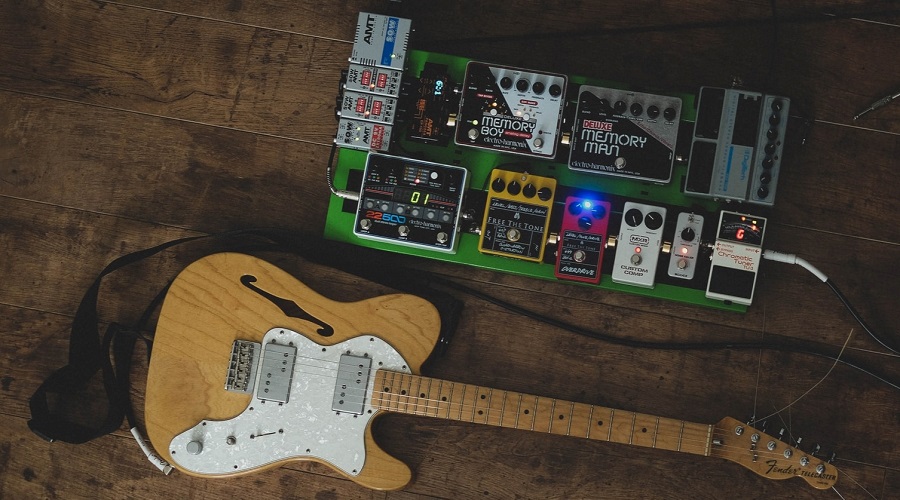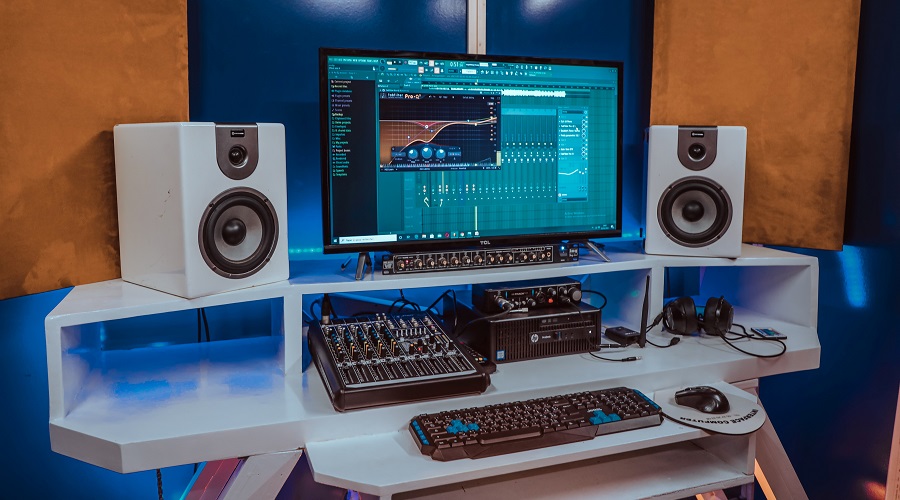If you’ve ever been alone in an empty school hall or a large room, chances are you gave in to the temptation of shouting at the air just to hear it shout your words back at you!
Did you know that this phenomenon is called an “echo”? And did you know that echoes are an example of the delay effect but instead of happening in music production, it’s in the natural world?
It’s no secret that music has more than a fair share of confusing terms, and in the production department, things can get pretty complex.
In today’s article, I’ll be answering the question “what is delay in music?” and explaining its basic elements, common types, main uses, and popular techniques throughout history.
What is Delay in Music?
Delay in music production refers to a technique of processing audio signals where an audio source is captured and repeated back -once or more- soon after the original sound. These playbacks or repetitions are discrete and tend to get lower in volume over time, but this depends on the plug-in you use.
Delay in Music: Explained
Now that you have a first impression of what delay means in music production, let’s dive deeper into the topic. As I mentioned above, the delay in music is an audio processing technique.
It takes incoming audio signals and plays their duplicates back a little delayed to mimic how echoes sound, resulting in a unique effect in the final song.
In real life, an echo happens in acoustic areas where the sound source and the listener are far enough from the reflection surface that the reflected sound seems like a separate tap or distinct repeat of the initial sound. You can hear an example of an echo when you shout into a well.
If we have two similar sounds and we play them in quick succession, they’ll fuse and seem as one sound to the listener if the delay between them falls between 1 millisecond and 50 milliseconds. If the delay time is any longer than 50 milliseconds, the repeated sound will begin to appear more like a separate echo.
Delay-based effects include reverb, chorus, and flange effects. In each of these, producers adjust the elements or parameters of delay or modulate the audio signal to create end results that sound different than the end product of a straight delay effect.
What’s the goal of delay effects?

So what exactly is the goal of using delay effects? Well, there are more than a single benefit to applying such effects.
For one, music producers and audio engineers incorporate delay into their mixes to add a level of depth and a feeling of space. Musicians employ delay techniques in their performance and playing to demonstrate creativity. You can also use delay effects to give vocals or instruments more character and tone.
Ever since the beginning of their creative uses in the 1950s, the delay has had an integral part in shaping and developing popular music. For example, check out how Les Paul did the groundbreaking song “How high the moon”.
What’s more, many music styles even exist if not for the effects of delay. From Dub, Country, and Reggae, to Rockabilly, Trip-hop, and Dreamy electronica, it’s clear that delay is heavily featured in almost every genre of pop music we listen to today.
How do delay effects work?
Generally speaking, delay effects follow the same conditions of function, although the tech or form can vary depending on the type of delay effect in question.
To create a certain delay effect, the audio signal is recorded or buffered and then played back later on in the song as repeats of the original signal. The manner the delay tails or repeats are modulated will differ with varying types of delay effects.
Types of Delays in Music
Now, let me walk you through a simple breakdown of the three major types of delay you can come across in music production:
1. Analog and Tape Delay

As I mentioned above, software plugins typically aim to emulate or recreate the delays created by the music hardware of the past. Back in the 1950s, producers used tape machines to generate their delay effects. If you’re interested in how that’s possible, check out this video.
Later on, producers moved from tape machines to analog delay devices and echo machines, which mostly continued to use tape but were easier to work with. Roland Space Echo and Echoplex are examples of such tape-based systems.
Instead of relying on tape to create the echo or delay effect, other analog delay units employed solid-state parts to get the job done. For example, the BOSS DM-2.
2. Digital Delay
Digital delays came to life towards the end of the 1970s, and since then, became the successors of analog delays. The first form of digital delay was outboard units such as the AMS DMX 15-80S.
During the early 1980s, another style appeared in the form of pedals (for example, the BOSS DD-2). Sometime later, the Ibanez DE7 became available.
Digital delay types, true to their name, utilize special electronics to process digital signals and generate the delay effect. Nowadays, their popularity is still solid as both studio racks and pedals.
3. Software Plugins Delay
This is the most common type of delay used in just about every home studio; software plugins. These programs can effectively cater to your everyday music production requirements with incomparable ease.
Much like equalizer and compression plugins, we can categorize delay software plugins into ones that imitate delays created by older hardware and ones that don’t.
Basic Elements or Parameters of Delay Effects

With the types of delay effects fresh in your mind, let’s discuss the basic parameters of elements of a delay effect:
- Tempo or BPM —music producers/engineers use this parameter to set the tempo of the process of the delay plugin or unit. Usually, the delay tempo should match the DAW project’s tempo, but this isn’t written in stone.
- Tap Tempo —a lot of delay plugins or units allow producers/engineers to use pad controllers or mouse buttons to tap in a tempo.
- Delay Time —music producers/engineers use this parameter to set the time between each distinct repeat and the next. The majority of delay plugins allow you to decide if this particular control is to be synced or not. With the synced control, you’ll be able to change the delay time to the length of a musical note, such as the 8th or 16th note, according to your tempo setting. With the sync option turned off, you get the freedom of setting the delay time in milliseconds.
- Wet/Dry or Mix —music producers/engineers use this parameter to set the ratio between the original (dry) signal (or sound) and the delayed (wet) signal. If this element is set to 100 percent dry, you’ll only hear the original signal. If it’s set to 100 percent wet, you’ll only hear the delayed signal.
- Feedback —music producers/engineers use this parameter to determine the number of repeats that the delayed sound will occur after the original audio signal. This way, you can set how long you want your delay tail to be. Typically, each delay will be at a lower level than the one before until we reach silence following the final delay. If you set the feedback to 100 percent, every tap will play as loudly as the one before and will keep repeating until you bring down the feedback setting. If you set the feedback to 50 percent, every tap will play at half of the previous level until they drop into silence.
Fundamental Delay Techniques
Let’s finish things up with a look into some of the most common delay techniques:
Slap-Back Delay

Popular since the 1950s and 1960s, this technique is often used with guitars and vocals. To achieve this, try setting the delay time to fall somewhere between 70 and 120 milliseconds.
Doubling Technique
The doubling delay is essentially the same as the previous delay technique but the delay time is shorter and the wet signal features some extra processing. To achieve this technique, try setting your delay time to fall somewhere between 20 and 50 milliseconds.
Ping-Pong Technique
This delay technique is simply a twin delay effect where the two delay taps engage in a call-and-response dynamic. For example, one channel could play at 300 milliseconds delay time while the second repeats at 600 milliseconds.
The ping-pong technique is ideal for adding depth and space to your mixes.
Widening/Thickening Techniques
When two parallel audio signals are repeated -one from the right speaker and one from the left- at an extremely short delay time (around 11 milliseconds), listeners will register them as one sound.
Due to this effect, this sound will seem more spread out in the field. The exact width will vary depending on your pan settings for every channel.
Vocal Techniques

You can find these techniques used all over today’s pop music, for example, in chorus effects.







